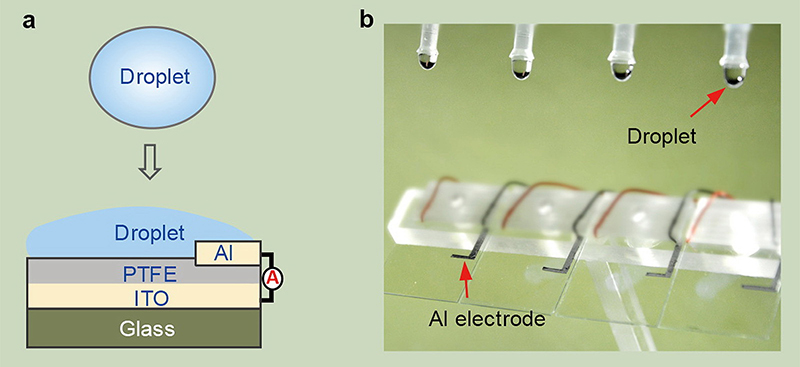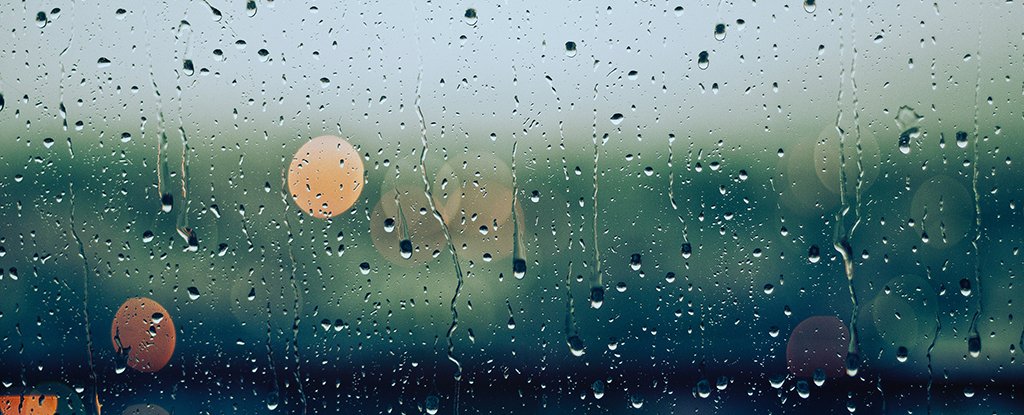Tapping into the water cycle and generating electricity from rainy days could be one way to grow our renewable energy use.
Until now, scientists have been unable to get water droplets to produce a significant amount of power - but we may finally have a breakthrough.
While we're still a long way from umbrellas that double up as generators, the latest approach shows there might be a way to get power from rain showers at a level of efficiency that makes these systems practical.
New research has found a method that could generate enough power from a single droplet of rain to light up 100 LED bulbs. That's a big jump forward in efficiency, in the region of several thousand times.
"Our research shows that a drop of 100 microlitres of water released from a height of 15 centimetres [5.9 inches] can generate a voltage of over 140V, and the power generated can light up 100 small LED lights," says biomedical engineer Wang Zuankai from the City University of Hong Kong (CityU).
That sounds like a surprising amount of voltage, but the engineers used some ingenious tricks to make it happen.
Scientists have been looking into this type of power production for years, but the physics of converting the energy of raindrops into electricity are much harder to do than harvesting the energy from a rising tide or a flowing stream.
One of the improvements the team built into their droplet-based electricity generator (DEG) was the use of a polytetrafluoroethylene or PTFE film, which is able to accumulate a surface charge as it's continuously hit by water droplets, until it gradually reaches saturation.
The team found that as water droplets hit the surface and spread out, the drops act as a 'bridge' that connects two electrodes: an aluminium electrode and an indium tin oxide (ITO) electrode (with the PTFE on top).
 (Wanghuai et al., Nature, 2020)
(Wanghuai et al., Nature, 2020)
The droplet bridge in turn creates a closed-loop surface so that all of the collected energy can be released – droplets act as resistors, and the surface coating acts as a capacitor.
This approach could eventually be applied anywhere that water hits a solid surface, the researchers say – the hull of a boat, the inside of a water bottle, or the top of an umbrella.
"The significance of this technology is the much enhanced electric power per falling rain droplet, which makes the device much more efficient to convert energy from a falling droplet to electricity," chemist Xiao Cheng Zeng, from the University of Nebraska-Lincoln, told Sarah Wells at Vice.
There's plenty of work still to do to get this ready for practical use however, with the researchers hoping to have a prototype ready in the next five years.
The research has been published in Nature.
You received this message because you are subscribed to the Google Groups "Mercado de Energia Elétrica" group.
To unsubscribe from this group and stop receiving emails from it, send an email to meefurb+unsubscribe@googlegroups.com.
To view this discussion on the web visit https://groups.google.com/d/msgid/meefurb/CAPW0GncqA5C96YKzfw2ATCsfFb19ciJyiH0eHCsvL2VJ2m172w%40mail.gmail.com.



Postar um comentário